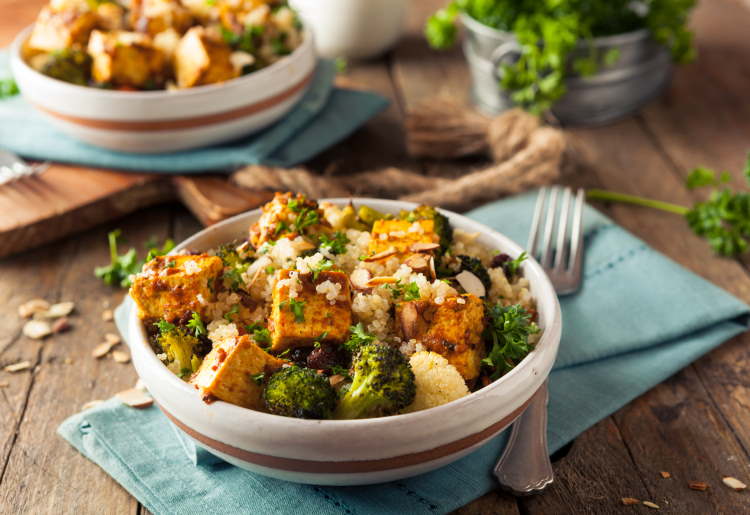Though gluten-free eating is not new, it’s become increasingly popular even amongst those without specific gluten sensitivities because it generally improves GI health and boosts energy levels.
Gluten is prevalent in many common foods and therefore requires some effort to avoid. But keeping to a gluten-free diet is much easier than it was years ago. The boon in gluten-free eating has led to the popularity of breads, pastries, pastas, and even beers made sans the offending ingredient.
Nonetheless, avoiding gluten means knowing what it is, where it’s found, how to avoid it, and what ingredients to use instead.
What is Gluten?
The word gluten actually refers to a family of proteins. It’s role is to add shape to food and hold it together, though it’s presence is not always obvious and it can appear in unexpected places.
Gluten is most commonly found in 3 types of food: wheat, barley, and rye. Avoiding gluten requires knowing which foods contain these 3 ingredients:
Wheat occurs in breads, baked goods, pasta, and cereal.
Barley can be found in malt, food coloring, soups, and beer.
Rye is generally found in rye breads, cereal, and some beers.
A lesser-known grain called triticale also contains gluten and should be avoided. Triticale is a newer grain and is sometimes found in bread, pasta, and cereals.
Unless labeled gluten-free, the above foods should be avoided if one is keeping to a gluten-free diet.
The Benefits of a Gluten-Free Diet
If you suffer from celiac disease or another gluten-related condition, removing gluten from your diet is key to avoiding discomfort.
According to the Mayo Clinic, there are 4 primary health conditions triggered by gluten:
Celiac disease is an autoimmune disorder that causes damage to the small intestine when gluten is ingested. Symptoms may include stomach pain, bloating, diarrhea, and constipation.
Non-celiac gluten sensitivity mirrors the symptoms associated with celiac disease but does not cause intestinal damage.
Gluten ataxia is another autoimmune disease that affects nerve tissues and muscles.
Wheat allergies cause congestion, difficulty in breathing, and other allergy-like symptoms when ingested.
According to Healthline, less than 1% of people suffer from celiac disease. However, many more have been jumping on the gluten-free bandwagon despite their lack of an intolerance. Nonetheless, grocery stores are stocked with more gluten-free products than seems reasonable for less than 1% of the population. Clearly there are many who don’t need to avoid gluten but do anyway and find some merit in it be it for energy, GI, health, or improved digestion.
What to Avoid
Though we traditionally associate gluten with bread and other grains, it can be found in a wide variety of foods. Anyone following a gluten-free diet, and especially those with gluten intolerance, should familiarize themselves with the following.
Here’s a sampling of common foods that The Celiac Foundation lists as containing gluten:
- Pastas: ravioli, dumplings, couscous, and gnocchi
- Noodles: ramen, chow mein, egg noodles
- Breads: croissants, bagels, pita, naan, muffins, and donuts
- Snacks: pretzels, goldfish crackers, graham crackers, cookies, brownies
- Breakfast foods: pancakes, waffles, french toast, crepes, and biscuits
- Misc.: panko breadcrumbs, croutons, soy sauce, beer
In addition to the above, The Celiac Foundation lists these foods and sometimes but not always containing gluten. It’s best to check the ingredient labels or preparation methods of the following foods rather than assuming they’re gluten free:
- Energy bars and granola bars
- French fries
- Potato chips
- Soups, especially cream-based soups
- Salad dressings
- Seitan
Lastly, some items that may be overlooked could contain traces of gluten. These include:
- Lipstick
- Supplements
- Drugs and OTC medications
- Vitamins
What You Can Eat on a Gluten-Free Diet
The following foods contain no natural gluten and are your safest bet for adhering to a gluten-free diet:
- Fruits
- Vegetables
- Meat and poultry
- Fish and seafood
- Dairy
- Beans
- Legumes
- Nuts
Remember, especially if you’re eating out, that sauces or other ingredients with gluten may have been added. Additionally, Healthline recommends double checking fruits and vegetables that come canned, frozen, dried, or pre-chopped, as they may contain sauces or flavorings.
These grains and starch-based foods are also naturally gluten-free and safe to eat:
- Rice
- Cassava
- Corn
- Soy
- Potato
- Beans
- Quinoa
- Millet
- Flax
- Chia
- Yucca
- Kasha
Moving Forward
Your reason for adhering to a gluten-free diet will likely impact the extent to which you need to go to avoid it. Those with celiac disease and other gluten sensitivities need to eliminate it completely and therefore should be vigilant about checking ingredient labels. Those enjoying the gluten-free diet for energy or wellness reasons may be able to afford more freedom. Either way, knowing where gluten occurs naturally and where it’s commonly added, will make it infinitely easier to meet your goals. Supermarkets commonly stock gluten-free products as well, making it even easier to at least cover the basics. From there, as with other diet strategies, it’s wise to familiarize yourself with brands and meals that you trust and make them a part of your daily routine.
